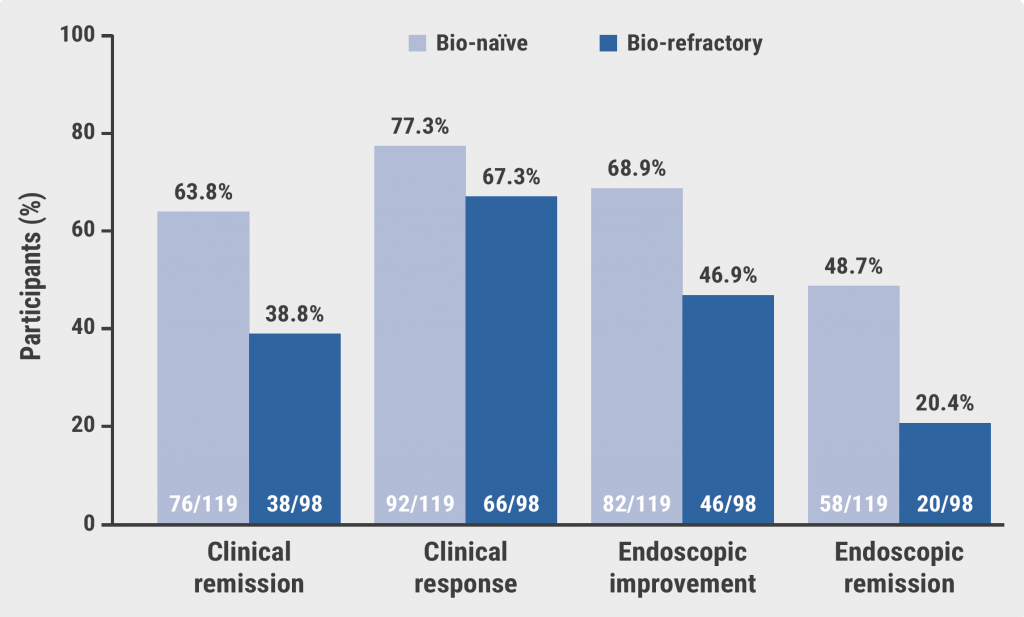https://doi.org/10.55788/f1a391d0
A prospective study was conducted including 28 patients with Parkinson’s disease and 18 patients with REM behaviour disorder, all of whom reported gastrointestinal symptoms without serious organic diseases and were not receiving any therapies affecting gastrointestinal motility [1]. Additionally, 14 healthy controls were included for comparison. Serum ELISA assays measured levels of tumour necrosis factor (TNF), caspase-1, and lipopolysaccharide-binding protein (LBP). Colonic biopsies from 10 patients with Parkinson’s disease, 4 patients with REM behaviour disorder, and 9 healthy controls were also obtained to assess tissue expression of inflammatory markers via western blot (e.g. for caspase-1 and procaspase-1) and immunofluorescence (e.g. for CD68).
The primary endpoints included levels of systemic and colonic tissue inflammatory markers. All 3 groups were comparable regarding age and sex. Serum assays revealed significantly elevated LBP levels in patients with Parkinson's disease (35.0; P=0.002) and REM behaviour disorder (32.2; P=0.01) compared with healthy controls (23.1). TNF (0.1 vs 0.04; P=0.03) and caspase-1 (16.9 vs 9.9; P=0.04) levels were significantly increased only in the Parkinson's disease group compared with healthy controls. The western blot analysis showed higher procaspase-1 (157.3 vs 100.0; P=0.02) and caspase-1 (168.3 vs 83.5; P=0.03) in patients with Parkinson's disease compared with healthy controls. Finally, immunofluorescence indicated a qualitative increase in CD68+ macrophage infiltration and apoptosis-associated speck-like protein expression in both Parkinson's disease and REM behaviour disorder groups compared with healthy controls.
In conclusion, the study demonstrates increased gut inflammation in patients with Parkinson’s disease, evidenced by elevated levels of procaspase-1, caspase-1, CD68+ macrophages, and apoptosis-associated speck-like protein expression in colonic tissue. Patients with REM behaviour disorder also showed increased inflammatory markers, though less consistently. Elevated serum levels of these markers suggest that gut inflammation and permeability may be early indicators of the development of Parkinson’s disease and REM behaviour disorder.
- Rettura F, et al. Gut permeability and its role in Parkinson's disease: preliminary results from a pilot study. Sa1697, DDW 2024, 18–21 May, Washington DC, USA.
Copyright ©2024 Medicom Medical Publishers
Posted on
Previous Article
« Promising data for cardiovascular outcomes of bariatric surgery in patients with obesity Next Article
Quality-of-life assessment in children with eosinophilic oesophagitis »
« Promising data for cardiovascular outcomes of bariatric surgery in patients with obesity Next Article
Quality-of-life assessment in children with eosinophilic oesophagitis »
Table of Contents: DDW 2024
Featured articles
PREEMPT CRC: Blood-based screening test for colorectal cancer shows promise
Eosinophilic Oesophagitis Treatments and Outcomes
Mepolizumab improves the histologic severity of eosinophilic oesophagitis
Budesonide demonstrates efficacy in eosinophilic oesophagitis
Dupilumab shows promising results in treating paediatric eosinophilic oesophagitis
Quality-of-life assessment in children with eosinophilic oesophagitis
Gut-Brain Axis and Neurological Disorders
Gut permeability and neuroinflammation linked in Parkinson’s disease
Cardiovascular and Metabolic Health Innovations
Promising data for cardiovascular outcomes of bariatric surgery in patients with obesity
Inflammatory Bowel Disease Therapies
GALAXI 2 & 3: Guselkumab proves efficacy in Crohn’s disease
QUASAR maintenance study: Guselkumab effective and safe for UC
VEDOKIDS: Vedolizumab maintains remission in patients with paediatric IBD
ADMIRE-CD II: Darvadstrocel does not meet primary endpoint in complex Crohn’s perianal fistulas
Advances in Endoscopy and Screening Techniques
PREEMPT CRC: Blood-based screening test for colorectal cancer shows promise
New cable-transmission capsule endoscopy shows high accuracy in detecting upper GI lesions
Liver and Biliary Tract Diseases Updates
Superior OS with atezolizumab plus bevacizumab versus lenvatinib in unresectable HCC
Nutritional consultation boosts nutritional status in patients with alcohol-associated hepatitis
REGENERATE study: Obeticholic acid shows antifibrotic benefit in NASH
Acalculous cholecystitis as a risk factor for gallbladder perforation: insights from a 10-year retrospective study
Other Gastrointestinal Diseases
STARS: Apraglutide shows efficacy in short bowel syndrome with intestinal failure
COX-2 inhibitors show promise in reducing severity of acute pancreatitis
Hormone-containing therapies may increase the risk of IBS and functional dyspepsia
Related Articles


December 7, 2023
Obefazimod takes the spotlight as promising UC treatment
© 2024 Medicom Medical Publishers. All rights reserved. Terms and Conditions | Privacy Policy
HEAD OFFICE
Laarderhoogtweg 25
1101 EB Amsterdam
The Netherlands
T: +31 85 4012 560
E: publishers@medicom-publishers.com

